
OUR ADOPTED FAMILY
Meet Our Adopted Animals
Aside from the Angora goats, we currently have another eighteen animals on our farm – our adopted family.
We have seven goats – Ella, Lily, Flora, Bianca, Zola, Pearl and Vicky (the latest addition to the family). The first four of this group were magnificent in clearing the scrub that had grown everywhere. We adopted them in December 2019 from a nearby rescue centre, La Ferme des Rescapés in Cassagnes. Their owners had to move to Guadeloupe for work and were devastated at having to send them to the shelter. However, when they found out that we had adopted them they contacted us. We started doing video calls so they could see the girls and when they return to mainland France to visit they come to see them. They get really quite emotional!
Family history
We found out more information about the goats, including that Flora is Lily’s daughter and Ella’s brother was the father of both Flora and Bianca. Bianca’s mother was an Angora goat. It’s amazing to see how dominant the Angora genes are given that Bianca’s father was, like his sister Ella, a very dark goat with long horns. With her huge fluffy white coat, Bianca looks like a marshmallow in the winter. However, when spring arrives the whole lot falls out and she looks like a regular white goat.
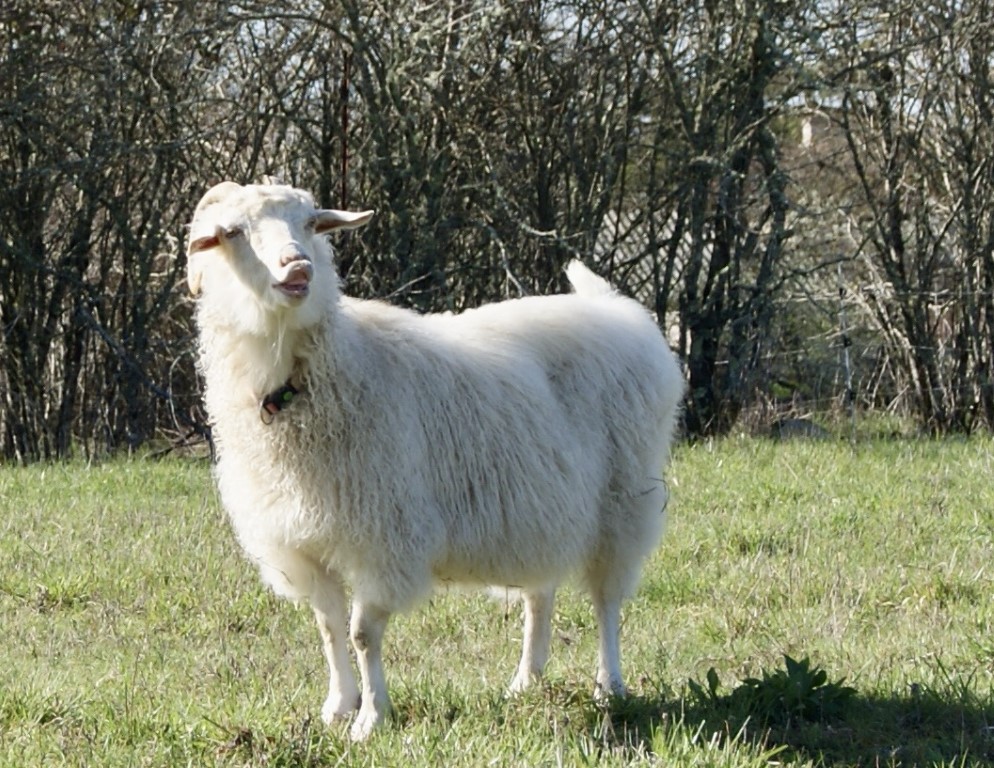
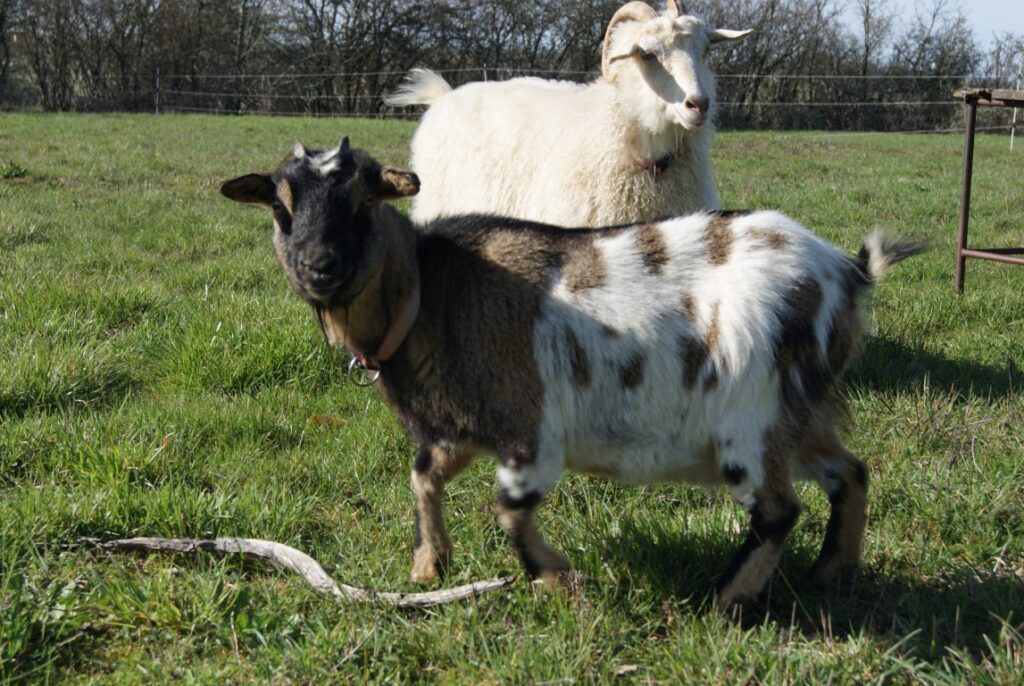
Zola and Pearl came to us via the police in nearby Fumel. We received a call asking if we could take two dwarf goats who were very successful escape artists, and the police were tired of chasing them through the streets of Fumel. Unfortunately, their owners kept them in a place that wasn’t ideal, so the police decided it was in the goats’ best interests to rehome them. They are wonderful little girls, particularly cute.
Our newest adoptee is Vicky. She came from a family in our village whose other goat had recently died. As an only goat, Vicky was very lonely and withdrawn, so they asked if we would take her. Following blood tests to ensure she was free from anything that could endanger our animals, we welcomed Ms Vicky on 28 March 2023. She’s a very confident goat and fits in wonderfully to our little rescue goat herd.
Three Rescue Dogs : Inge, Lila & Maggie
We adopted Inge in summer 2014 while we were still in Switzerland. She originally came from a shelter in Albacete, Spain and we adopted her through a Swiss charity that rehomes dogs from Spain. We believe Inge is a mix of Grand Bleu de Gascogne and greyhound, hence her beautiful colouring, her love of singing, her slim figure and long legs – and her impressive top speed!
Lila is our little minx. Originally from Guadeloupe, we don’t know how Lila arrived in mainland France, but we adopted her from La Ferme des Rescapés. From her papers we know Lila was born in January 2019 and we adopted her that July, just a few days after we arrived in France. We’re told she is typical of the street dogs in Guadeloupe, so we have no idea about her genetic make up. But whatever is in there has produced a dog of exceptional cheekiness. Lila can usually be found either nibbling on Maggie, under our duvet, or rolling around on her back looking for belly rubs.
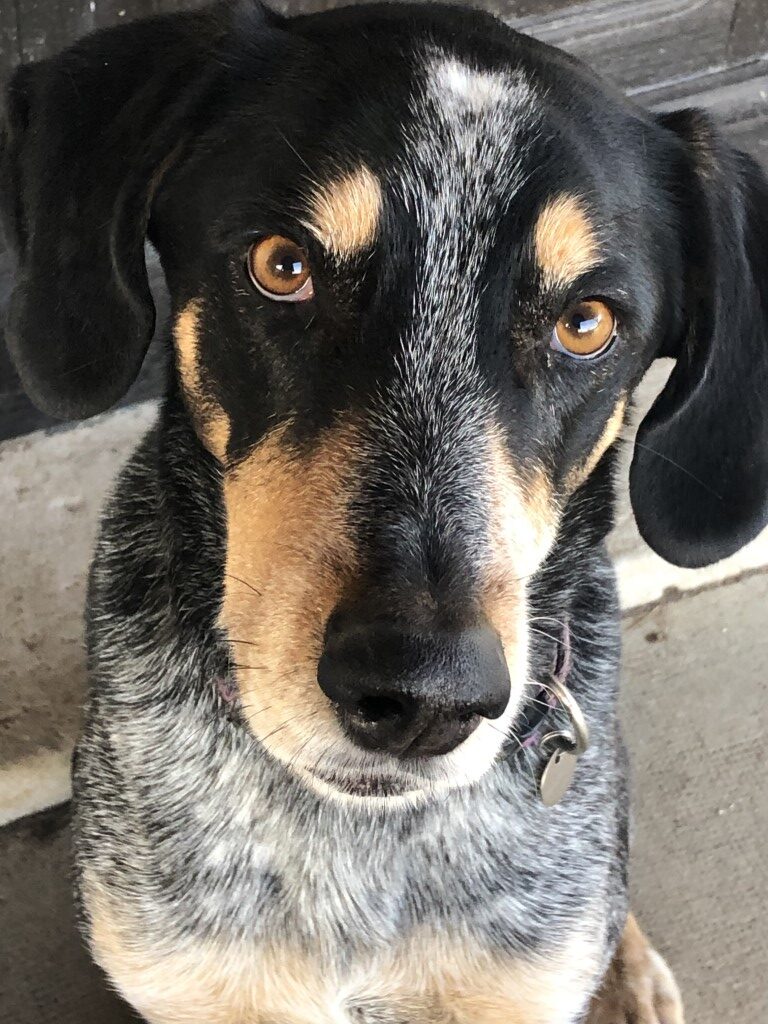
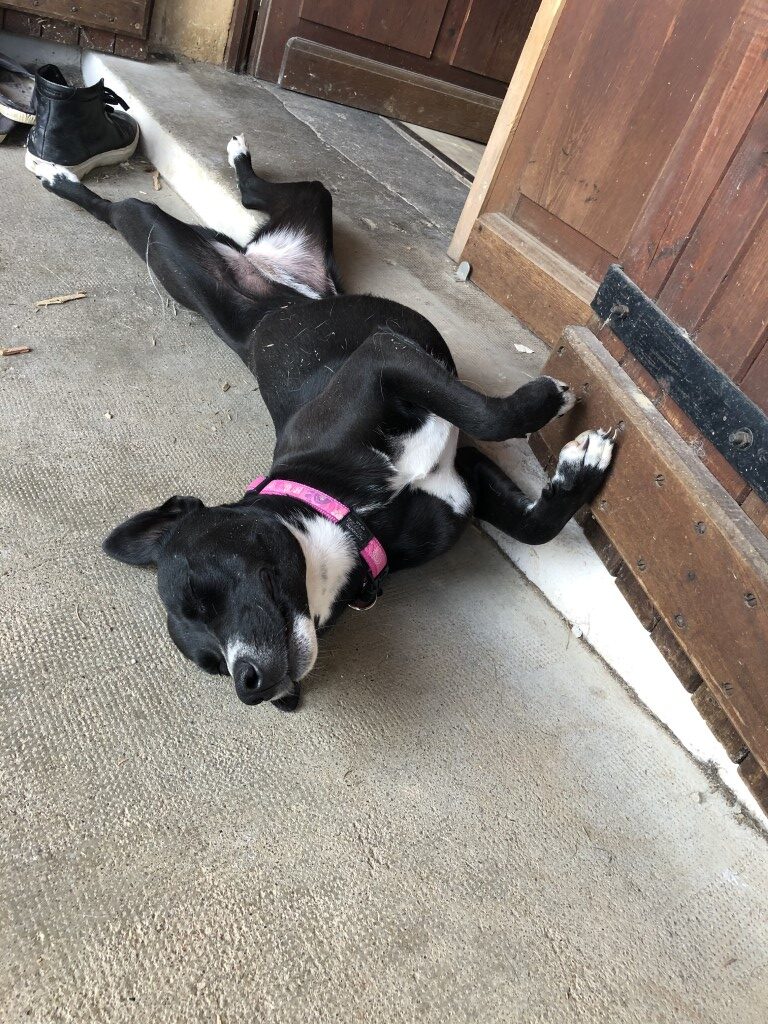
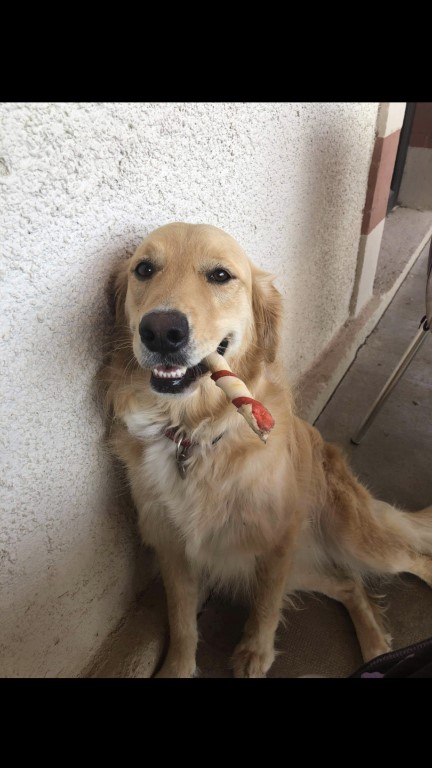
Second time lucky
Maggie is also from La Ferme des Rescapés. We arrived from Switzerland with two dogs – Inge and our other rescue dog, Grace. We decided we could have a third dog and so we adopted Lila. Sadly, our darling Grace left us in November 2019 at the age of 16 years. So, in order for something good to come from that loss, we went to adopt another dog. When we first visited La Ferme des Rescapés, Maggie was there and she wouldn’t leave us alone. At the time though we really wanted a smaller dog and so we left with Lila. The second time we went, after losing Grace, Maggie was still there. She was determined that this time we wouldn’t leave without her. Despite being sick in the car on the way home, she settled in like a dream.
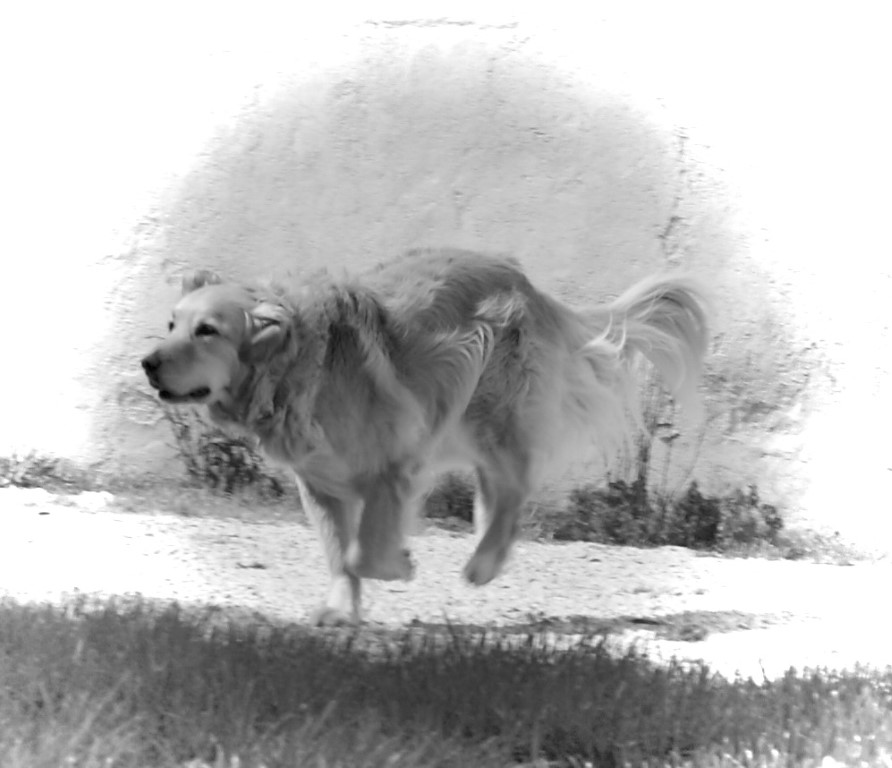
Maggie’s story is that her owner decided at about six months of age, she no longer wanted a dog. So she took Maggie to the vet asking to have her euthanised. As no respectable vet will kill a healthy dog, he contacted rescue centres and Mags ended up in Cassagnes. According to her papers, Maggie is a cross between a Golden Retriever and a Labrador. Sadly, Maggie was very nervous of Mario for the first year and sudden movements could frighten her. She’s so much better now though, and is a real sweetheart. Lila likes to use her as chew toy, but Mags holds her own and they’re often found wrestling on our bed.
Our two donkeys
Our donkeys Manon (the grey) and Fleurette (the dark brown) were adopted from an older couple nearby who couldn’t cope any more. The couple had actually rescued them from going to the abattoir. We are not sure of their age, but both donkeys are at least 22 years old. Initially they were very shy but they’ve come on wonderfully well.
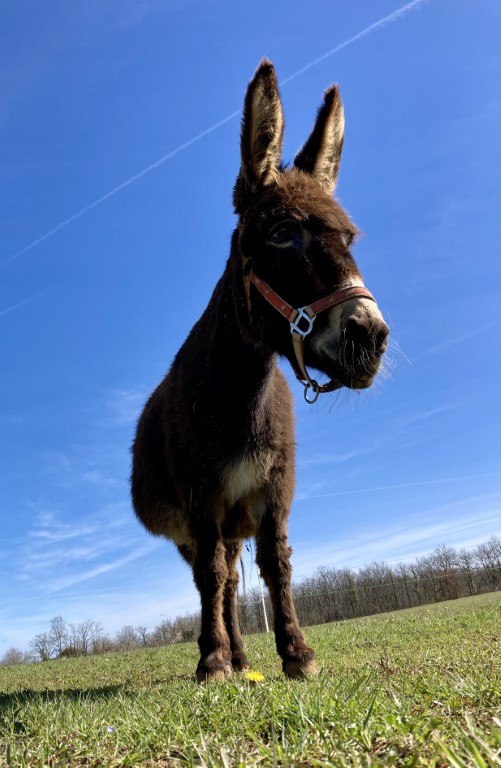
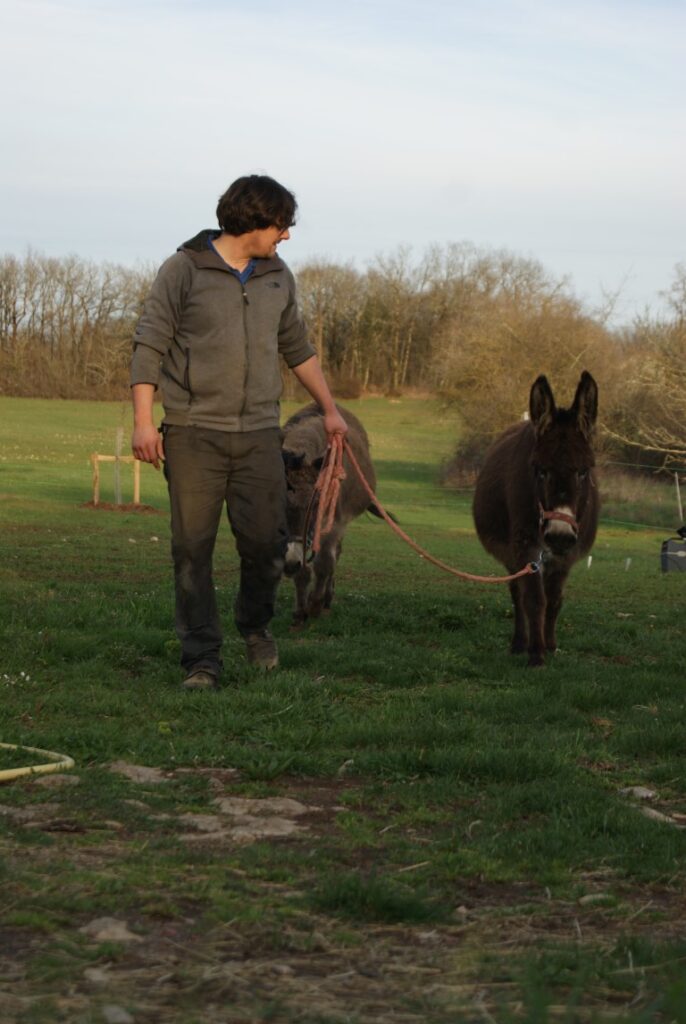
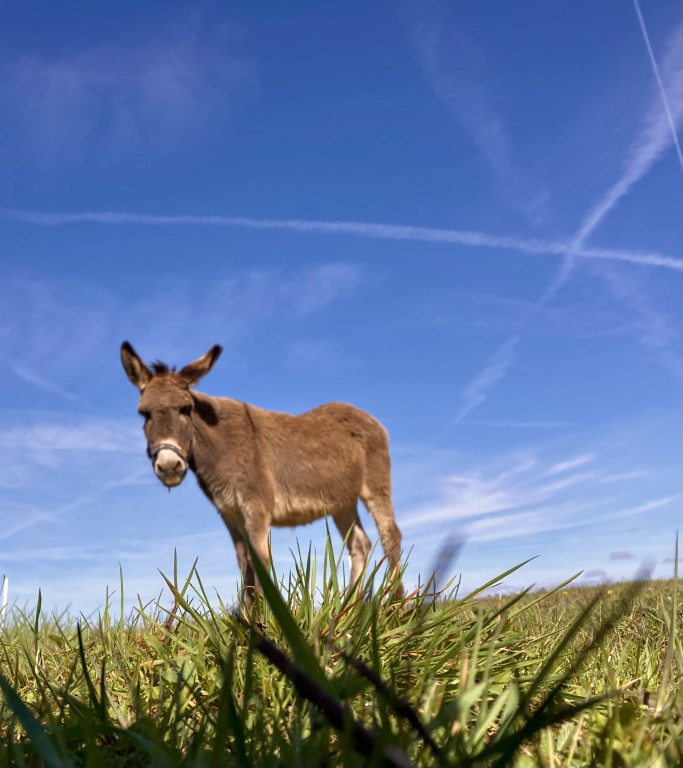

When they arrived they had to go on a strict diet because they were hugely overweight, which was causing problems with their feet. Needless to say, we were shouted at constantly (by the donkeys) during that time. In fact we get shouted at a lot! It’s an ongoing issue to keep their weight under control. Donkeys originate in dry, desert areas with little to eat, so their metabolism is spectacularly efficient – not ideal for South West France! There are several other donkeys in the area so there’s often news and gossip being loudly passed along the donkey grapevine.
FOUR Runner Ducks
We have four runner ducks who are specialists at keeping the slugs and snails under control. We have three females, Emily, Tina and Cher (these two have impressive voices, hence their names) and one male, Norris (Duck Norris – Mario’s choice, obviously). They are free to roam anywhere on the farm, but always return to their stable before dark so that we can lock them up safely. Runner ducks are supposed to be flightless birds but not ours, they often fly past the house.
Runaway Tortoise
Another member of our adopted family is Lemmy, a Mediterranean tortoise (Mario is a fan of the band, Motörhead). When we adopted Lemmy in 2014 we were told he was 15-20 years old. Sadly, because his previous owners didn’t feed him correctly he has what is known as a ‘Toblerone’ shell. Instead of being smooth, his shell is lumpy. Although this will not correct itself, it should not affect his future health. Lemmy is a very friendly chap and comes over when he hears people nearby.
We built the roundabout in front of the house as Lemmy’s enclosure and planted tortoise-friendly plants for him to eat. He still prefers vegetables but we do try to encourage him to eat a more natural diet. Once a week, as a treat, he has a small cherry tomato or a couple of berries as he adores those. Lemmy hibernates throughout the winter in his house, which is dug about 60cms into the soil and is packed with straw. We also add walnut tree leaves to discourage any rodents that might get in.
Lemmy loves to escape and made a run for it twice before we installed his current residence. Luckily both times he was captured. The first time we made flyers and put them all around our neighbourhood. That time he was found eating someone’s courgettes having crossed a road and dug into their garden. He walked about 600 metres the second time he escaped. We suspect he uses his hibernation time to plot his next prison break.
Last, but By No Means least – Joyce
Joyce is our pig. She was saved from slaughter by La Ferme des Rescapés who then struggled to keep her – she is an avid digger! – so they asked if we would take her. Joyce arrived with the first rescue goats in December 2019. The photo at the top of the page is Joyce when she came to us in 2019 as a juvenile. She is a lot bigger now – we estimate around 300kgs – but just as adorable!
You will see in pictures and videos that Joycie Pig’s tail has been cut off. Sadly this is common practice in commercially raised pigs as they are kept in small, overcrowded pens. Due to the stress and unnatural conditions, they bite their own or other pigs’ tails off. So the farmers’ solution is to cut the tails off when they are very young. Despite only having a stump, Joyce wags her tail when she’s happy, just like dogs do.
Wallowing in mud
Mario built a house for Joyce, complete with window and insulated curtains which she immediately ripped down – clearly not a fan of privacy. Joyce grazes, as all pigs would if allowed to do so, and we also feed her twice a day with grains, soya, vegetables and fruits. We dug a large wallow for her and on warm days Joycie spends much of the day taking mud baths. She looks great, so I’m considering joining her for the anti-aging benefits. Recently we planted a willow tree next to her pond, so that it would give her more shade. Unfortunately, Joyce lay on the poor willow the other day and we’re not sure if it’s given up.
Pigs are very intelligent, not to mention, and despite popular opinion, very clean animals. To keep her occupied we hide food around Joyce’s paddock for her to sniff out; walnuts are a particular favourite. Joyce loves being brushed, especially in the spring when much of her hair starts to moult. Just like humans eating ice cream, when it’s hot Joycie really enjoys the pigsicles that I freeze for her using water and a little fruit juice.
And that’s them all – for the time being…